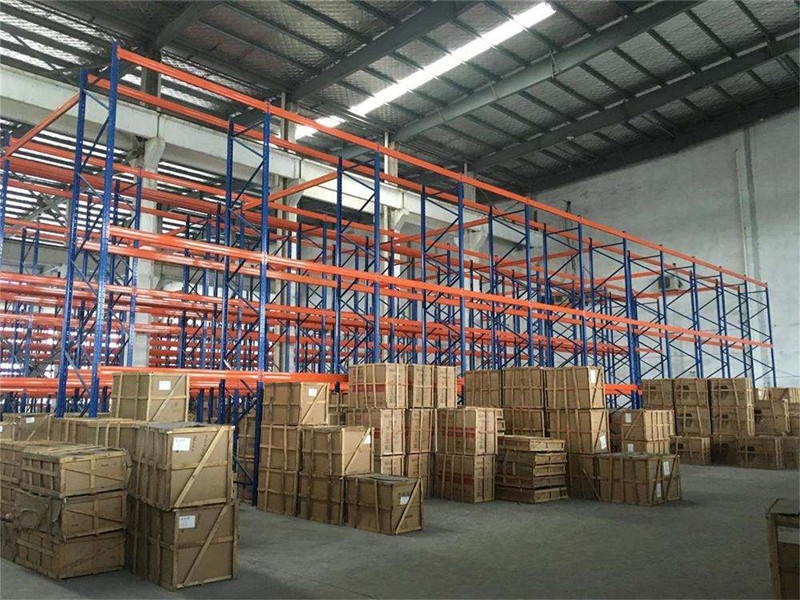Yo, warehouse warriors and garage gurus! Ever stared at a collapsed shelf buried under boxes like a sad Jenga tower? Or wasted hours hunting for parts because your storage looks like a Tetris game gone wrong? Choosing the right Heavy Duty Shelves isn’t just about holding stuff—it’s about saving your sanity (and your back). Let’s break this down step-by-step.
Step 1: Stop Guessing Your Weight Needs (Seriously, Don’t Wing This!)
The rookie mistake: Assuming "heavy duty" means "holds anything."
The reality: Not all Heavy Duty Shelves are created equal.
- Calculate ACTUAL weight:Grab a calculator. Add up:Max weight per shelf (e.g., 20x engine blocks @ 50 lbs each = 1,000 lbs)Include future loads (plan for growth!)
- Safety first, always:Choose shelves rated for at least 1.5x your max load. If you need 1,000 lbs/shelf, buy 1,500+ lb capacity. Your workers’ comp insurer will thank you.
- Pro tip: Dynamic vs. Static weight matters! Pallet jacks slamming into shelves? Forklifts bumping them? Factor in impact forces.

Step 2: Measure Your Space Like a Pro (No “Eyeballing” Allowed)
Heavy Duty Shelves eat up real estate fast. Mess this up, and you’ll be doing the sideways shuffle forever.
- Ceiling height is gold:Tall ceilings? Use vertical space with 10-ft industrial racks. Low basement? Opt for shorter, deeper units.
- Aisle space = productivity:Leave 36-48 inches for walkways. Need forklift access? Go 72+ inches.
- Doorways & corners:Can shelves fit THROUGH the door? (Ask me about the guy who disassembled 12 racks in the rain…) Corner units? Measure diagonally!
Step 3: Match Your Environment’s Vibe (Yes, Shelves Have “Vibes”)
Your Heavy Duty Shelves gotta survive your space’s chaos. Don’t put a dainty rack in a warzone.
| Environment | Shelf Killer | Solution |
|---|
| Warehouse | Forklift attacks | Bolt-together steel + guard rails |
| Auto Shop | Oil, grease, sparks | Powder-coated anti-corrosion |
| Cold Storage | Condensation, -20°F | Galvanized steel |
| **Retail Backroom | Constant reorganization | Adjustable rivet shelves |
Step 4: Bolt-Together vs. Riveted – The Showdown
This is where Heavy Duty Shelves get real. Each type has superpowers:
- Bolt-Together Shelves (The Tank):Pros: Handles CRAZY weight (5,000+ lbs/level!), survives forklift hits.Cons: Takes forever to assemble (bring coffee and patience).Best for: Auto shops, manufacturing, places where shelves get abused daily.
- Riveted Shelves (The Speed Demon):Pros: Snap together in minutes. No bolts = no lost hardware!Cons: Maxes out around 2,500 lbs/shelf. Not for brutal environments.Best for: Retail stockrooms, garages, “I need this done before lunch” energy.
Heads up: “Wire shelving” ain’t heavy duty. Save it for Costco runs.
Step 5: Don’t Ignore the “Boring” Stuff (It’ll Bite You Later)
Heavy Duty Shelves live or die by accessories:
- Decking matters:Particle board: Cheap but dies fast if wet.Steel mesh: Lets dust/debris fall through (lifesaver for messy shops).Solid steel: For tiny parts that’d slip through mesh.
- Safety = non-optional:Load beams: Prevent shelves from bowing like a tired hammock.Wall anchors: Earthquake zones? OSHA inspections? Don’t skip this.Column protectors: Save your shelves from rogue pallet jacks.

Step 6: Smart Buying Hacks (Save $$ Without Sacrificing Muscle)
Real talk: Good Heavy Duty Shelves aren’t cheap. But don’t overpay.
- Shop brands that pros use:Uline, Edsal, Gorilla Rack > random Amazon no-names. Check specs CAREFULLY.
- Used racks = hidden gems:Scout Craigslist/Facebook Marketplace for warehouse liquidations. Sanitize ’em and save 60%.
- Skip “kits” for big jobs:Buying 10+ units? Call suppliers directly for bulk discounts.
Final Step: Install Like a Boss & Maintain for Life
Installation pro-tips:
- Level or suffer: Unlevel floors? Use shims. Wobbly shelves dump loads.
- Don’t “Frankenstein” racks: Mixing brands = structural no-no.
- Label heights: Mark uprights with shelf heights (future-you will high-five past-you).
Maintenance = longevity:
- Monthly check: Tighten bolts, check for rust/damage.
- No “creative” overloading: That 2,000-lb engine block? Not going on a 1,500-lb shelf. Period.
The Bottom Line
Choosing Heavy Duty Shelves isn’t rocket science—but it IS physics. Nail your weight specs, measure twice, pick the right type for your chaos level, and never cheap out on safety. Do it right, and your shelves will outlive your business (and maybe your grandkids). Now go conquer that clutter!


 Wechat
Wechat
 Whatsapp
Whatsapp